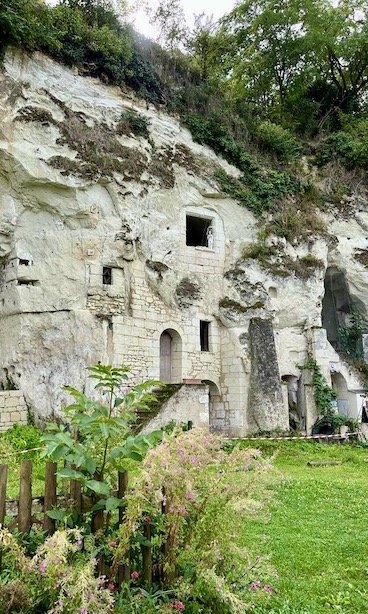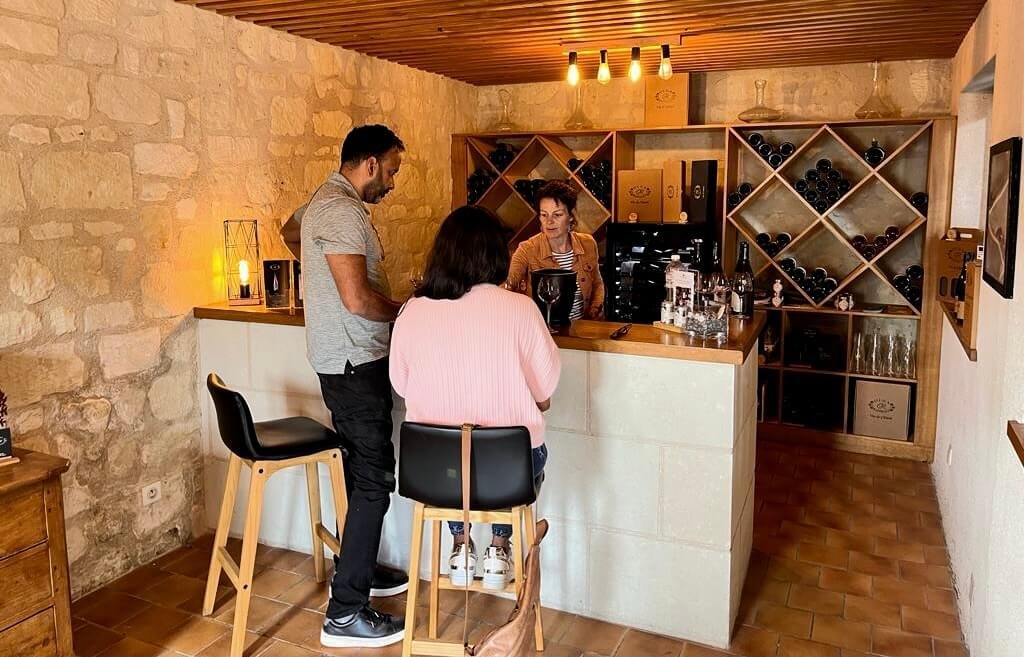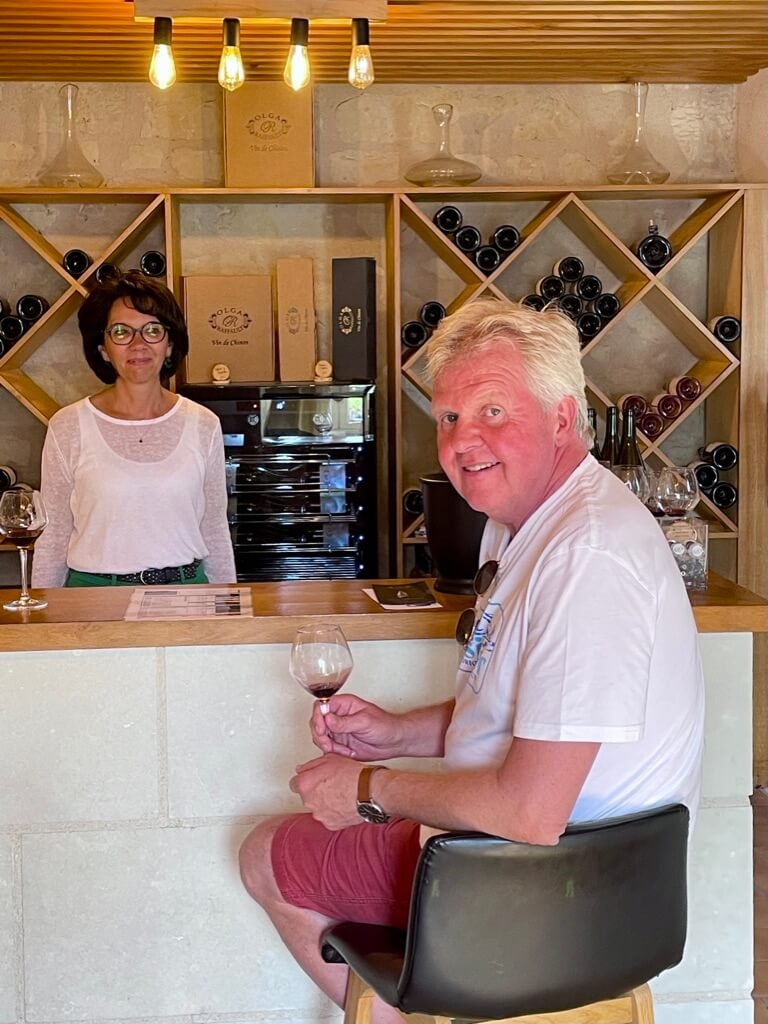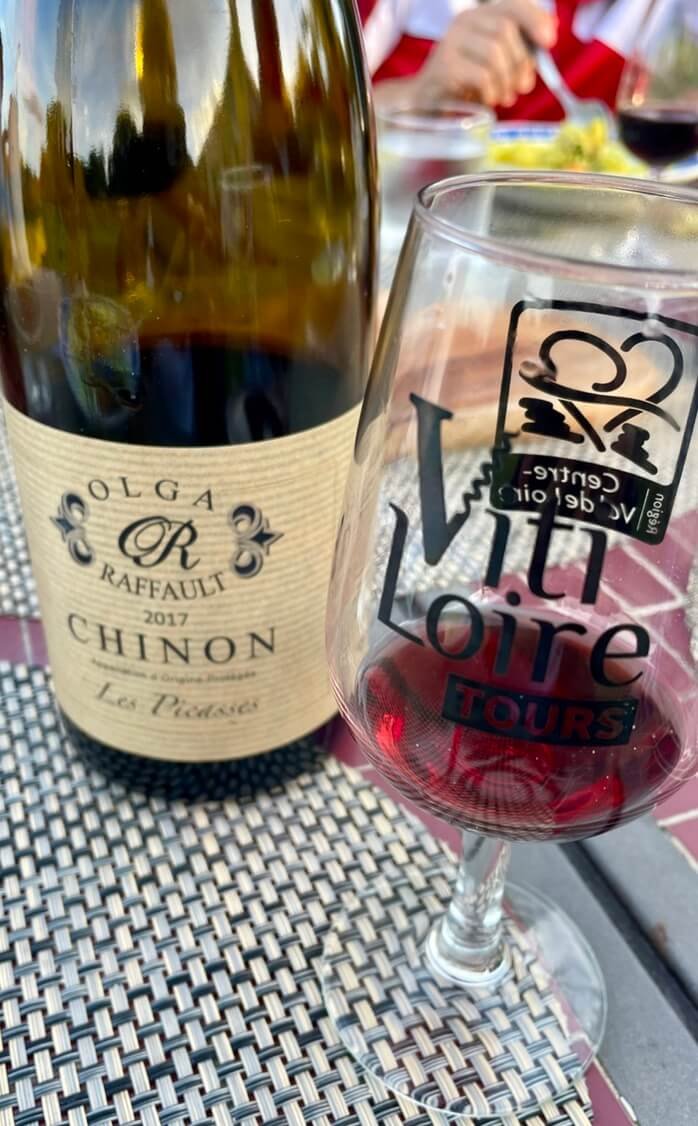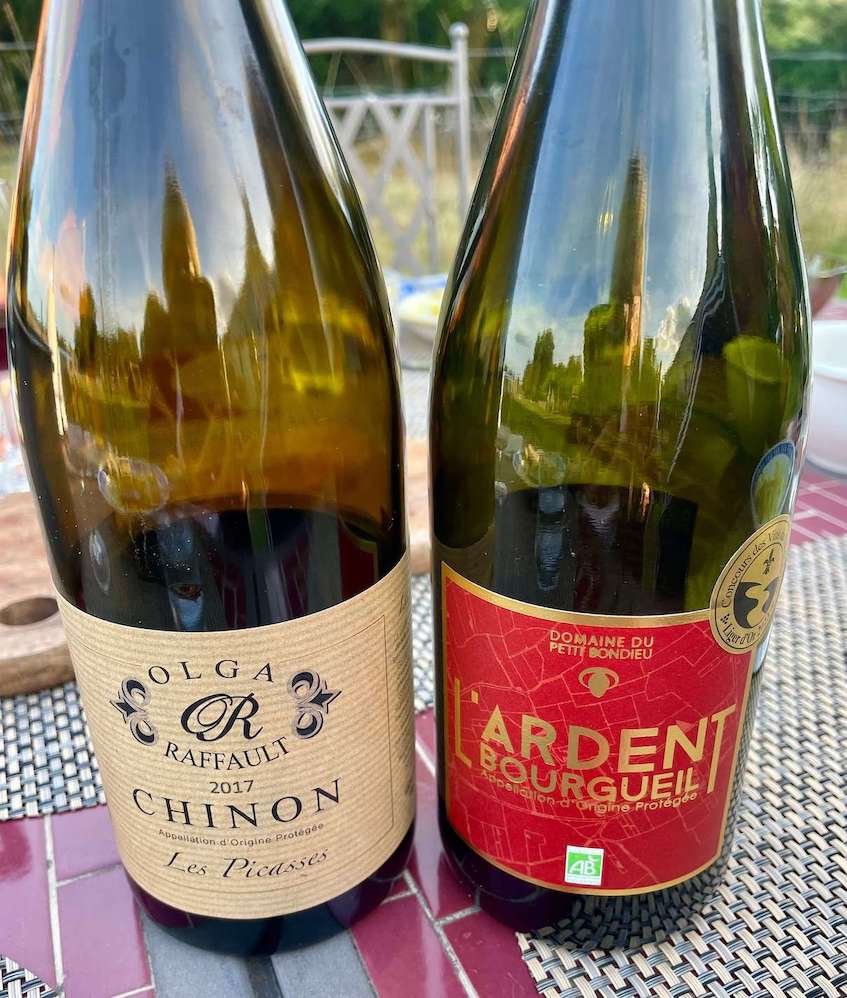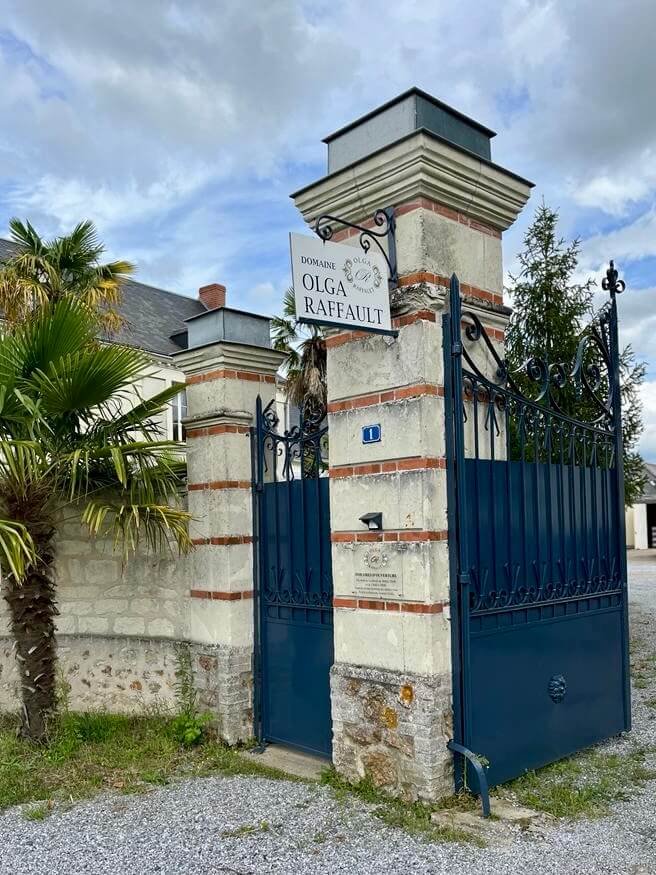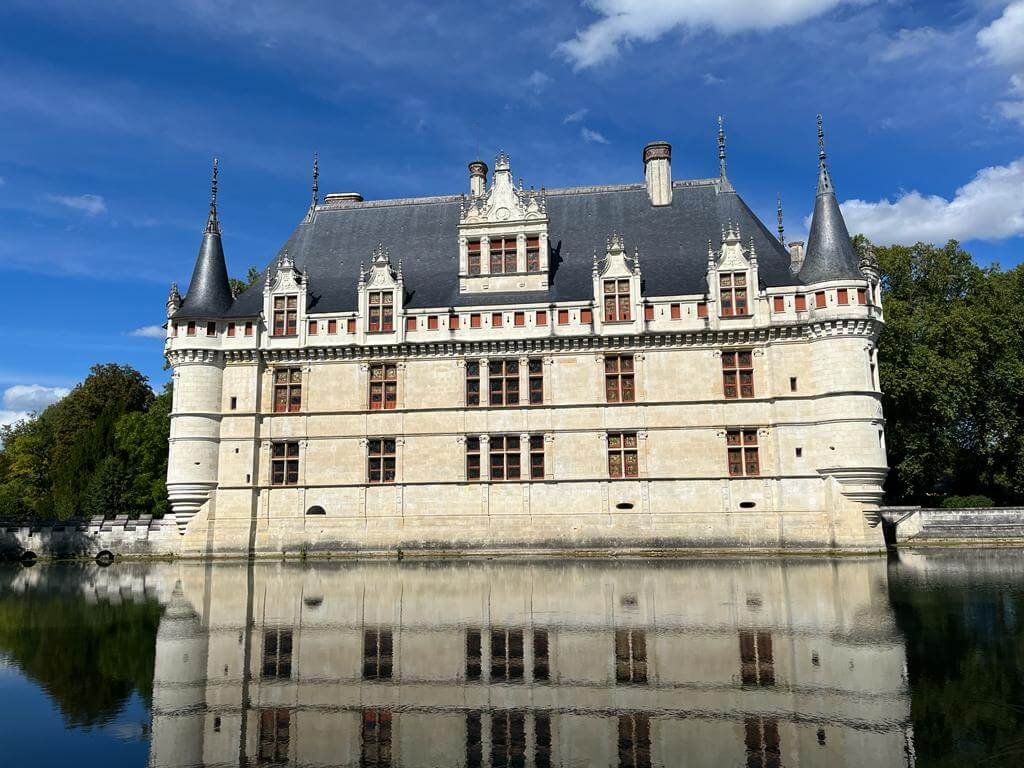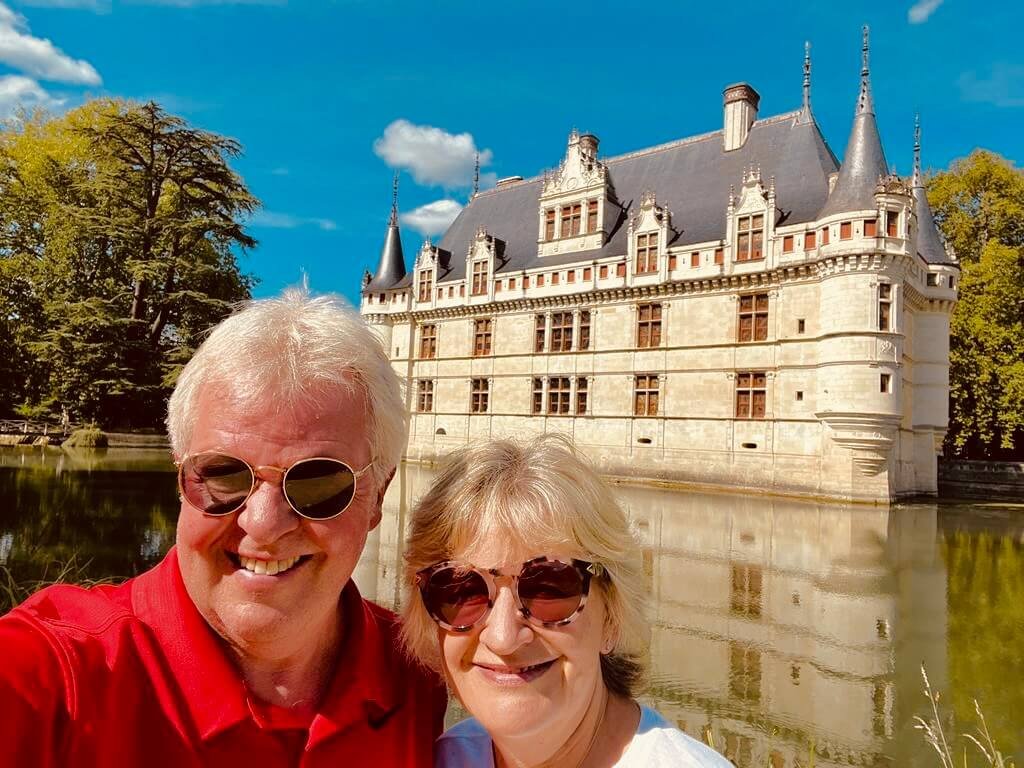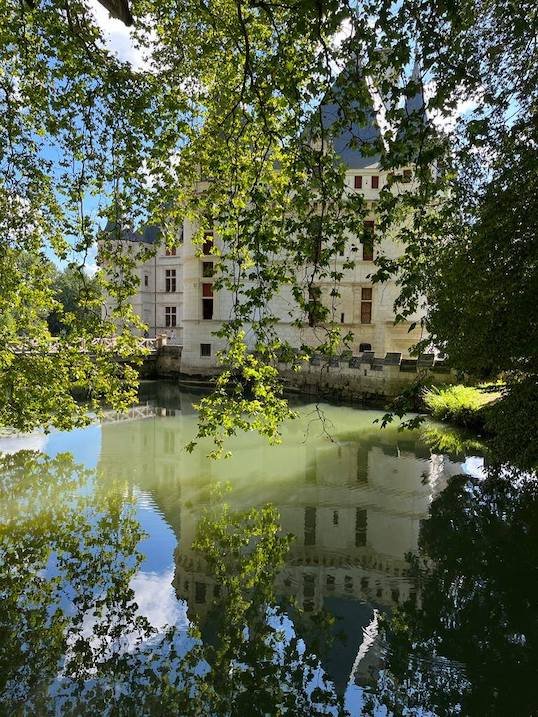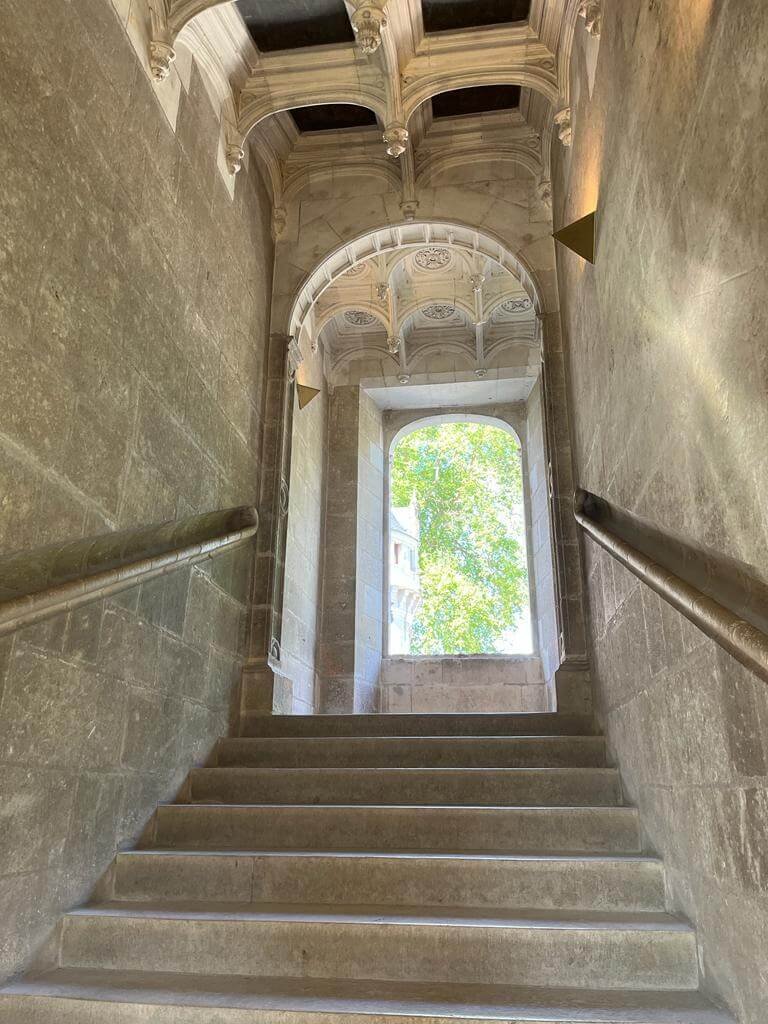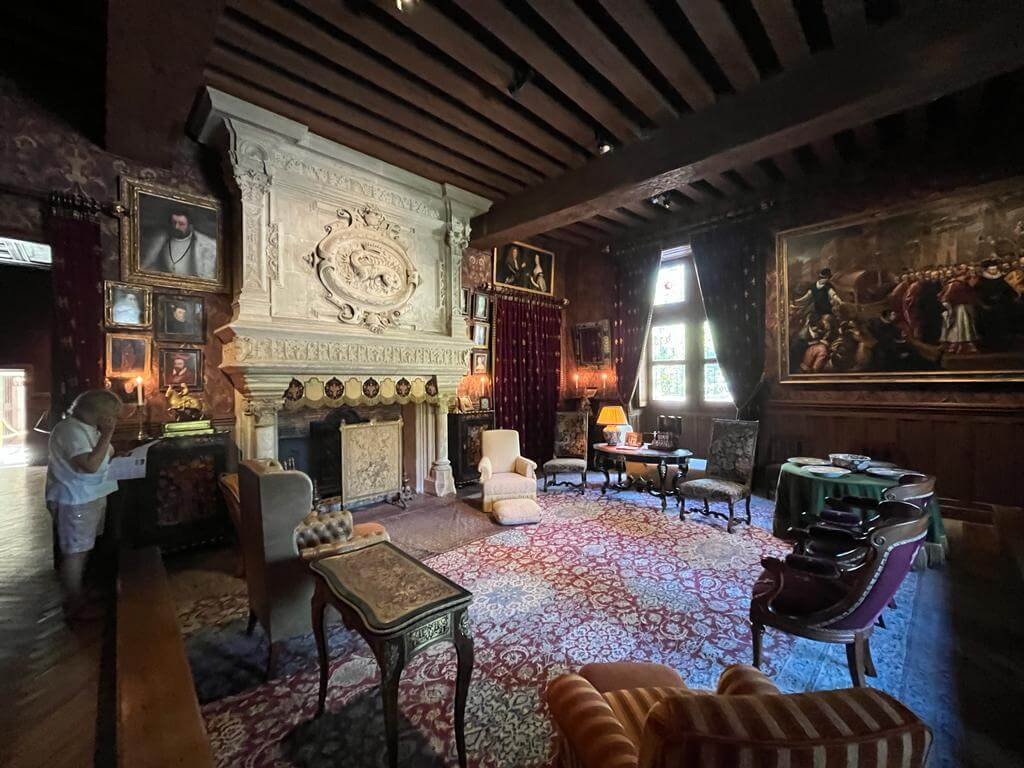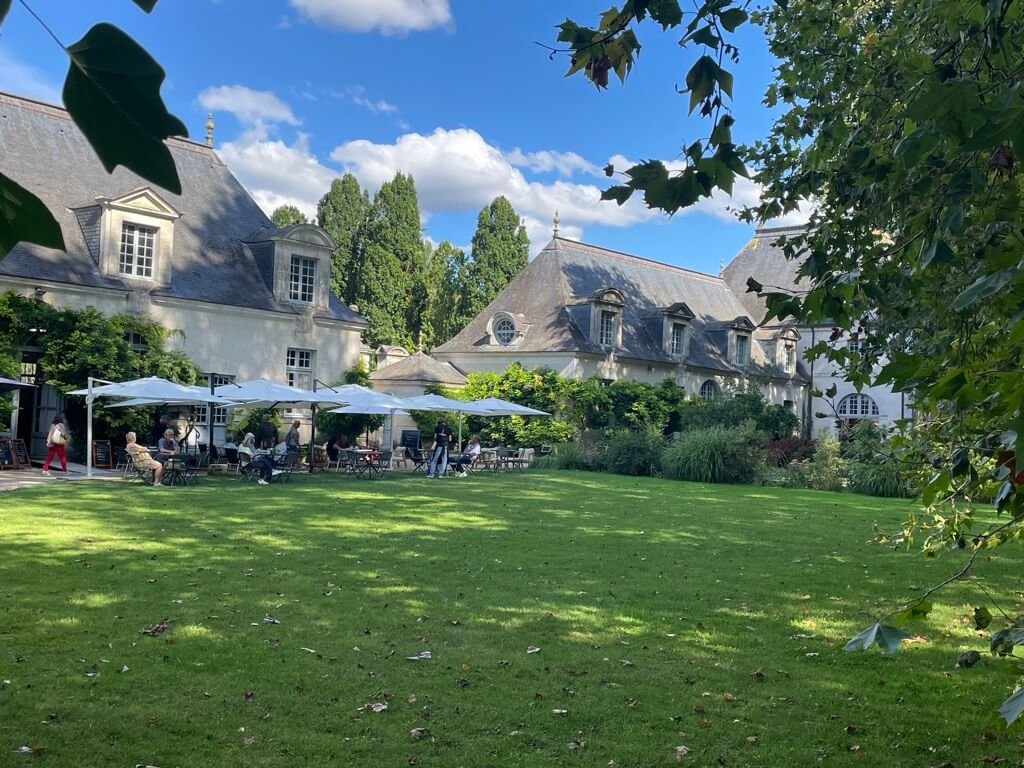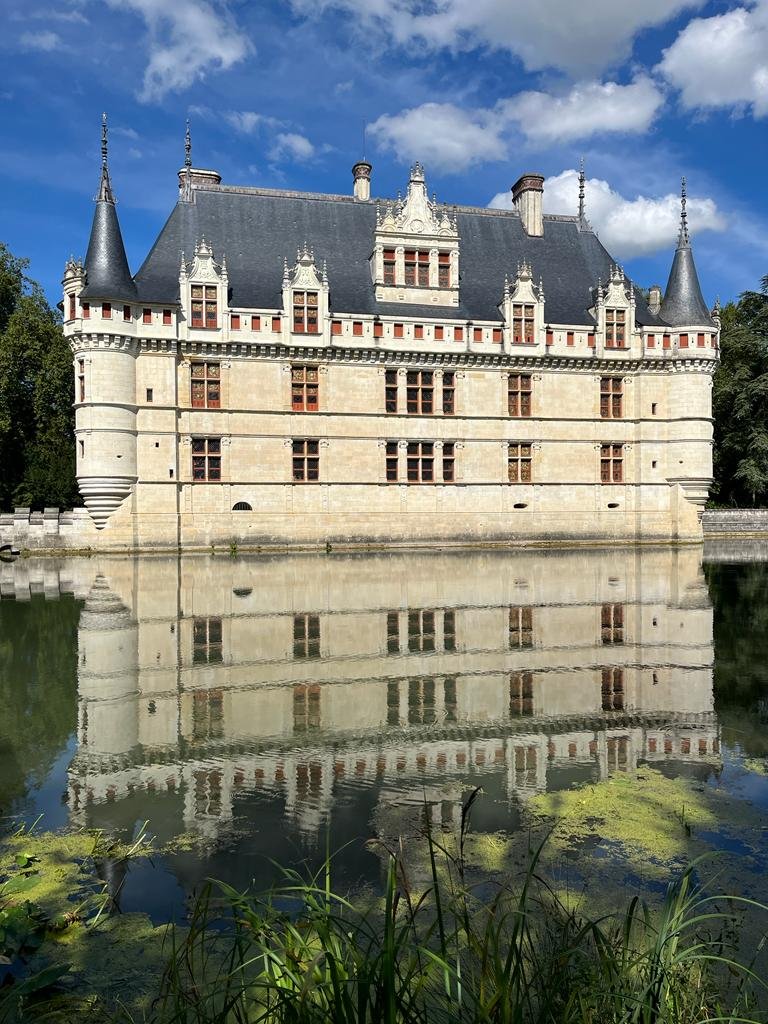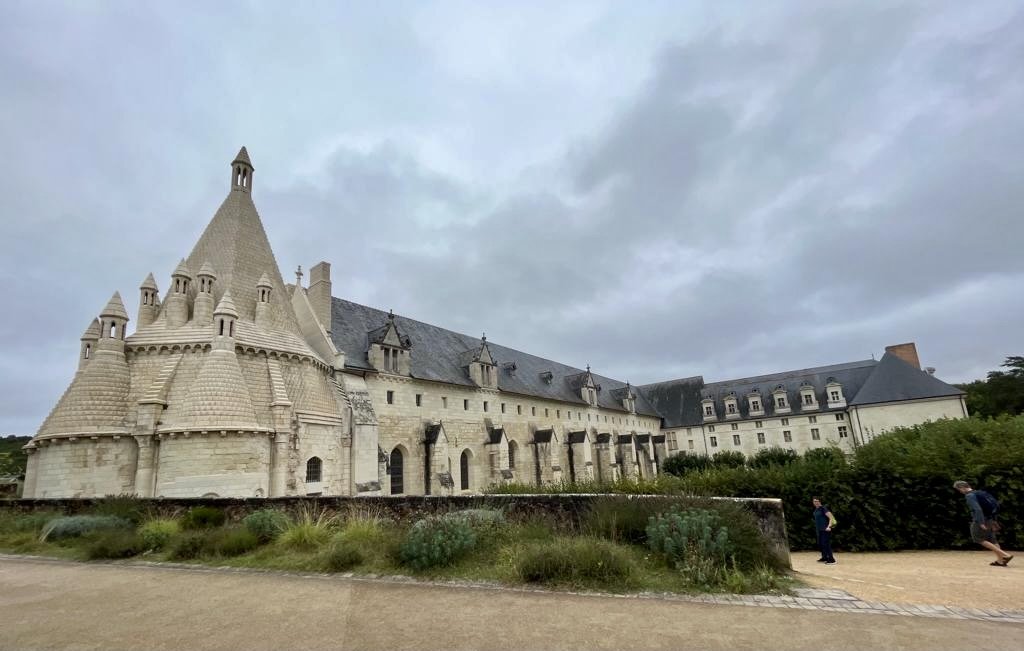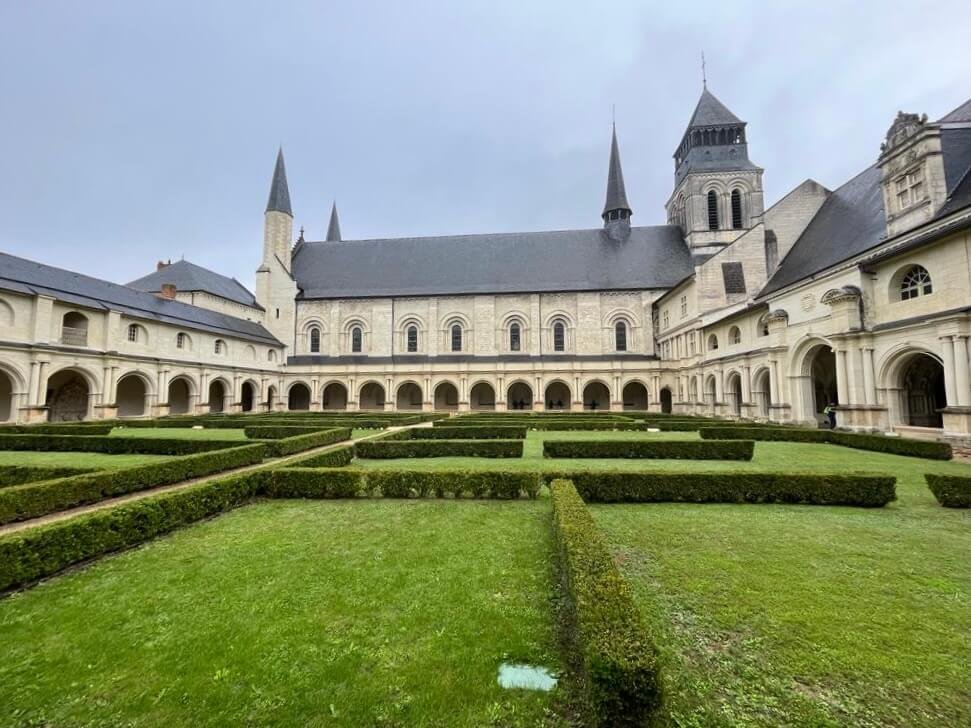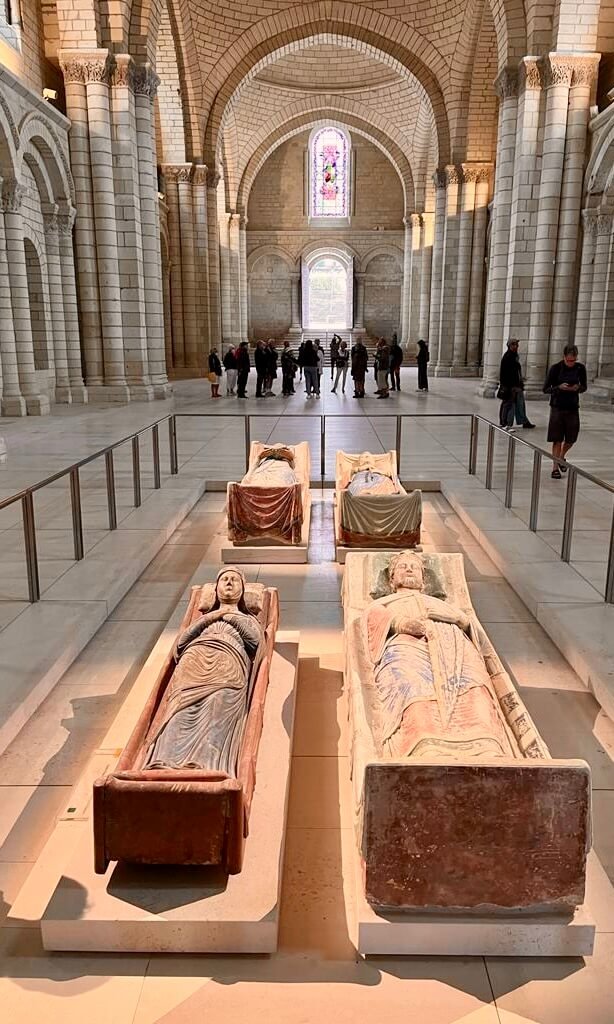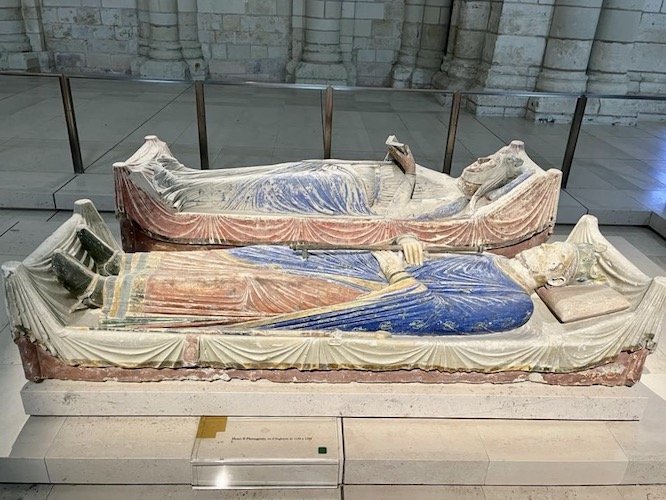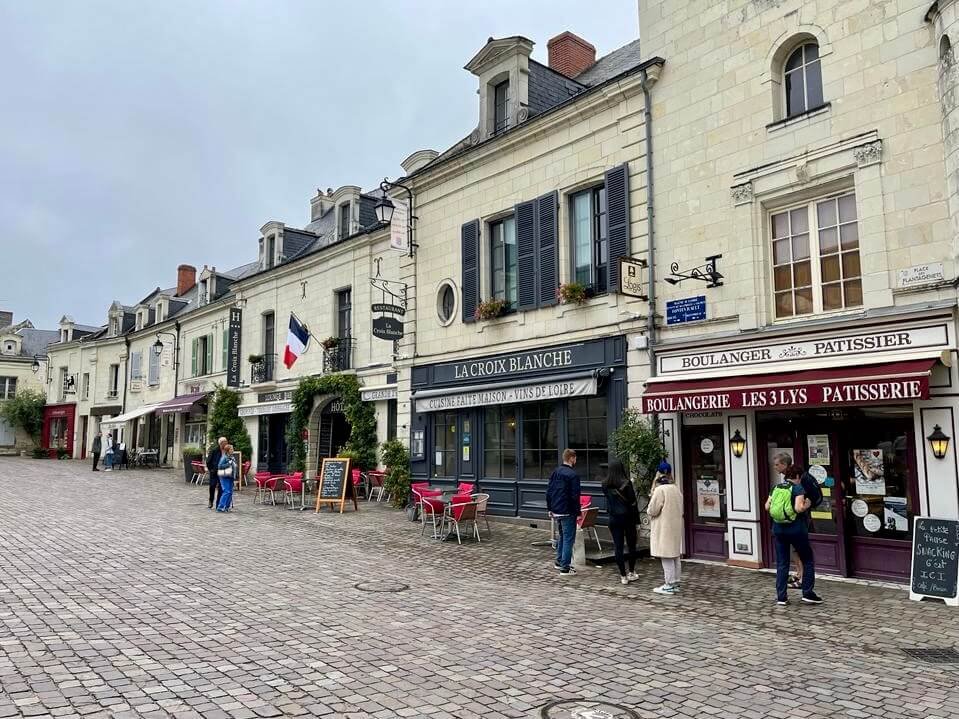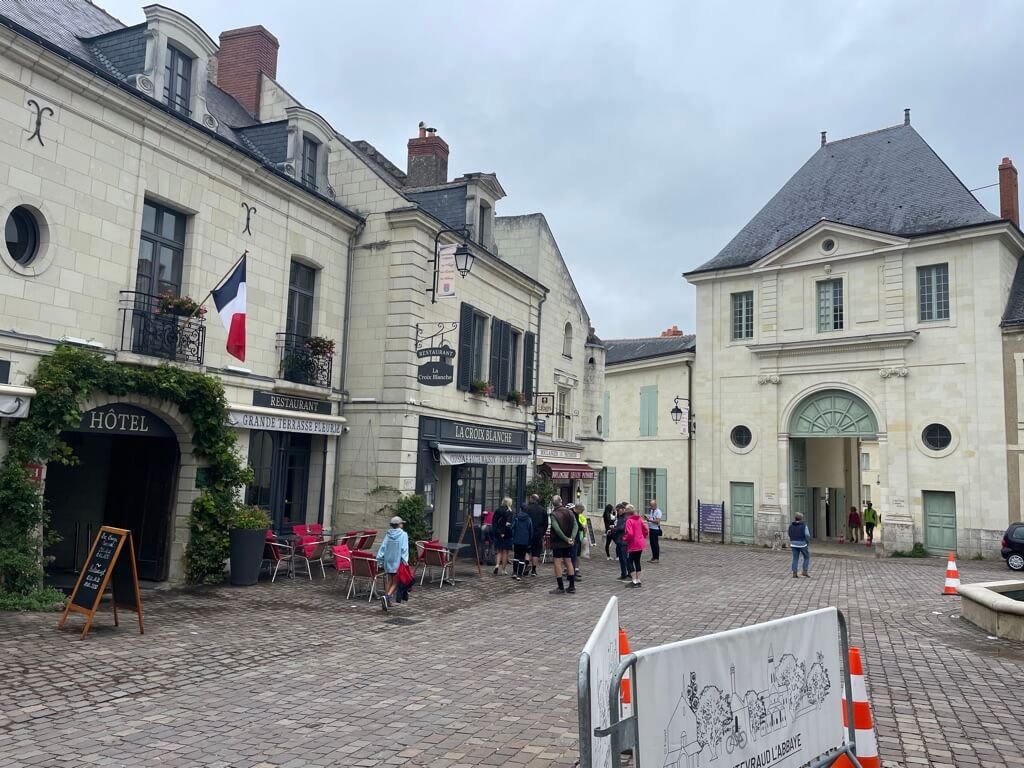Discover Touraine - cycling in the Loire Valley France
The Royal Fortress of Chinon overlooking the River Vienne in Touraine - Source: Winekeller
Touraine Loire Valley is the heart of this beautiful wine region and there’s no better way to discover it than by bike - here’s our 1 day Loire Valley bike tour discovering Chinon and Bourgueil
We travel to Touraine, the heart of the Loire Valley wine region and its word-famous Chateaux of the Loire Valley. There is so much to see and do here in the Middle section of the Loire Valley and for us, the best way to see it is by bike!
We start with the western section of Touraine - an area known for its superb red wines - around Chinon (famous for its fortress castle), Bourgueil and St-Nicolas-de-Bourgueil, which you can visit in a 1 day Loire Valley bike tour!
About Touraine
The Loire Valley’s Touraine region provides visitors with an exceptional historic, architectural and natural heritage, stretching from Amboise in the east to the beautiful village of Candes-Saint-Martin in the west. It’s a beautiful, peaceful section of the Loire river, with broad stretches, interspersed with small islands and shifting sandbanks and as well as the Loire, there are its 2 tributaries which flow through Touraine, the Vienne and the Indre rivers.
The main centre of the Touraine wine region is the city of Tours, which sits precisely halfway between Sancerre and Nantes.
Touraine is the location of many significant and magnificent historic French landmarks and as well as exploring Tours, visitors can explore Amboise, Chenonceau, Villandry, Azay-le-Rideau and Langeais, or the mediaeval towns of Chinon and Loches. You can also visit the original ‘Troglodyte’ caves and villages, nestled in the chalk cliff sides, once dwellings, now accommodation and wine cellars!
In addition to the culture and history - and wines of course - Touraine is celebrated for its gastronomy and it boasts an incredible 9 Michelin star restaurants!
For more information about the Touraine, Loire Valley, see here.
Touraine wines
The Touraine wine region is a large and often confusing French wine region. It represents some 16,000 hectares of vineyards and 1600 winegrowers, producing approximately 132 million bottles each year.
There are many different appellations in Touraine, including well-known ones, for example, AOC Vouvray, AOC Montlouis-sur-Loire and AOC Chinon.
The vineyards sit at the crossroads of an Atlantic influenced climate and a continental climate and the Loire and its tributaries have both shaped the landscape and given the region its rich soils. The soil is composed of ‘tuffeau’ chalk and flint sands and clays from the Paris Basin and the river bank terraces are made up of sand and gravel rolled by rivers and deposited over time. (The ‘tuffeau’ chalk is the same chalk which characterises the Loire chateaux and there are many ‘troglos’ dug into the cliff sides which serve as excellent cellars to hold the precious wines today).
Touraine produces all colours of wines - whites account for some 60%, reds for over 20%, then the rest is made up of sparkling wine and rosé. The main grape varieties for Touraine white wines are Sauvignon blanc and Chenin blanc and for Touraine red wines, Cabernet Franc, Côt (Malbec) and Gamay.
The Cabernet franc grape variety reigns supreme west of Tours and the most popular white wine is Loire Chenin blanc. Touraine wines tend to be quite fresh, well-structured, fragrant and fruity.
Touraine vineyard map - source: Vins du Val de Loire
The Loire’s most famous reds
The three appellations of Chinon, Bourgueil and St-Nicolas de Bourgueil all fall within the Touraine region, located west of the city of Tours - and this is home to the Loire region’s most famous red (and rosé) wines.
All three appellations share the same soils - gravel, sand and limestone - however in different proportions, making the wines quite different in style. The soils by the river which contain more sand and gravel produce lighter, earlier-drinking wines; those vines grown on pure gravel soils produce more structured wines and those grown on the limestone slopes produce more concentrated red wines with more tannins, which age well.
St-Nicolas de Bourgueil wines tend to be lighter as they are made from grapes from more sandy soils, whilst Bourgueil wines tend to be more concentrated and Chinon wines are the most elegant of the three.
Learn more about Touraine wines and the Touraine winegrowers.
Cycle route to discover western Touraine and its red wines
Our recommended 1 day Loire Valley bike tour to discover the western part of Touraine and its fabulous red wines, starts in the mediaeval town of Chinon.
Following a visit to Chinon and its spectacular fortress castle, we suggest taking the marked bike route west, along the River Vienne and then north to the village of Savigny-en-Véron, for the first of two winery visits, top AOC Chinon wine producer, Olga Raffault. We then suggest proceeding on the bike route towards Bourgueil, crossing the river Loire and then on to the second winery visit and wine tasting at one of two top AOC Bourgueil wine producers, Domaine de la Butte, or Lame Delisle Boucard.
In total the cycle route is approximately 25 kms, which should be OK if you're on an ebike. This equates to about 1-1.5 hours in the saddle! (However, be mindful of safety precautions to avoid an ebike injury, especially if you're not used to cycling long distances.)
Note: If you’re on a conventional bike and you don’t cycle regularly, you will need to allow for longer!
For more information about the Loire bike route and cycling in the Loire Valley, see:
Visit to Chinon
The Royal Fortress of Chinon is a unique mediaeval landmark in the heart of the Loire Valley, situated about 50 km west of Tours. It is built on a rocky cliff, overlooking the beautiful River Vienne, the Loire Valley and vineyards below.
Great historical figures are associated with Chinon, including Eleanor of Aquitaine, King Henry II of England, his son, Richard the Lionheart, the Dauphin Charles, Joan of Arc and even Jacques de Molay, the last grand master of the Knights Templar. Significantly, Joan of Arc met Charles VII here in 1429 before liberating Orléans.
A range of both guided and non-guided tours of Chinon are offered and we enjoyed a non-guided tour, supported by lots of interesting information provided via a ‘histopad’ tablet. See here for more information about what to expect but we thoroughly enjoyed walking round the fortress ruins and wandering through the wonderfully restored rooms.
The small town of Chinon at the foot of the cliff bearing the huge fortress, is also worth visiting, with its lovely cobbled streets and lovely squares.
Tip:
We can highly recommend leaving the town and crossing over the Vienne River to spend some moments at Chinon en Guinguette - a lovely bar, snack-bar and café situated on a lovely sandy beach by the river, with magnificent views up to the fortress.
Visit to Olga Raffault
After leaving Chinon, heading towards Bourgueil, it isn’t long before you reach the lovely village of Savigny-en-Véran and here you will find the winery, Olga Raffault.
Olga Raffault was originally established in 1931 and is now managed by Olga's granddaughter and her husband.
Olga Raffault produces top-quality, award-winning AOC Chinon wines made from grapes grown in 25 hectares of prime vineyards, nestled between the Loire and Vienne rivers. 24 hectares are allocated to red Cabernet franc and just 1 hectare to white Chenin blanc grapes. Olga Raffault has been certified organic for its red wines since 2015 and for its white wines, since 2020.
The vineyards are located across three different terroirs and the difference in soil is what creates the difference in the wines and cuvées - see earlier about the different mix of gravel-sand-limestone soils in this region.
We tasted a range of Olga Raffault wines: ‘Les Barnabés’ produced from grapes grown on sand/gravel soil; ‘Les Peuilles’ on siliceous-clay soils and ‘Les Picasses’ - known as the best soils in the region, producing much more robust wines due to a higher limestone content in the soils. These wines are aged for 12 months in oak barrels, or in the case of ‘La Singulière’ wine, aged for 24 months.
We had a great wine tasting at Olga Raffault and would highly recommend a visit - the wines are really excellent.
Visit to Domaine de la Butte
After leaving Olga Raffault, continue on the cycle path towards Bourgueil and head to Domaine de la Butte - the sister winery to Domaine de la Taille aux Loups in Montlouis-sur-Loire, a well- known and very successful producer of Loire Chenin blanc.
Loire trailblazer, Jacky Blot purchased the 8-hectare Domaine de la Taille aux Loups in 1989 and soon became known for his ‘natural’ approach to viticulture and winemaking, with practices such as ploughing rather than using herbicides, not fertilising the vines, spontaneous fermentations, barrel fermentation and barrel ageing. He quickly expanded his vineyards between the Loire and Cher rivers to 45 hectares in Montlouis, a further 5 in nearby Vouvray and 15 hectares in Bourgueil (purchased in 2002). Today all of the vineyards and wines are certified organic.
Jacky is a real icon in the Loire wine region and one of the world’s greatest exponents of the Chenin blanc grape variety, but he sadly passed away in May 2023, leaving the domains in the talented hands of his son Jean-Philippe.
The Bourgueil vineyards - Domaine de la Butte - are known for their excellent red, Cabernet franc wines, which you can taste during your visit here. We enjoyed 2 superb examples of their Cabernet franc wines:
‘Le Pied de la Butte’ - no oak, can drink now, 100% Cabernet franc
‘Haut de la Butte’ - aged for 12 months in used oak - can keep 15 years (a 6 hectares vineyard plot situated at the highest point of the domaine at an altitude of between 90 and 110 metres)
‘Mi-Pente’ - a wine made using grapes from 80 year old vines sitting between 70-90 metres altitude - a wine that can age and Jacky's version of a powerful right bank Bordeaux wine.
Our tasting of Jacky Blot wines from Domaine de la Taille aux Loups & Domaine de la Butte
Lamé Delisle Boucard
An alternative estate to visit in Bourgueil is Lamé Delisle Boucard - an important organic family estate, known for its aged vintages and consistent high-quality still wines and sparkling wines.
Useful information for visiting western Touraine Loire Valley
For the practical information you need when visiting this part of the Loire Valley see here. This website also has lots of information about accommodation options. We stayed in an Airbnb just outside Bourgueil, which was perfect!
When to visit Touraine:
For wine lovers, there are two major wine tourism events in Touraine not to be missed: ‘Vitiloire’ (the great wine festival of the Loire Valley, in Tours at the beginning of June) and Vignes Vins Randos (15 walks throughout the Loire Valley vineyards, at the beginning of September).
If you have some additional time to spare to explore the western part of the Touraine region, here are some suggestions for other great places to visit, popular attractions in the Loire Valley:
Château d’Azay-le-Rideau
Azay-le-Rideau is one of the most popular châteaux of the Loire Valley to visit and is known for its stunning 16th century Renaissance architecture, its beautiful setting on an island in the River Indre and the romantic 19th century landscaped gardens which surround the château.
We had always wanted to visit the Château of Azay-le-Rideau and it didn’t disappoint! One of the most stunning sights is the famous ‘mirror’ effect of this beautiful building, created by the water surrounding the château - it really needs to be seen to be believed and hopefully these photos do it some justice!
You can walk around the château, enjoying the beautiful gardens as well as inside, via a self-guided tour, taking in the sumptuously decorated apartments, with rare tapestries, furniture, pottery and paintings.
One of the most famous aspects of Château d’Azay-le-Rideau is the ‘Grand Staircase’, dominating the central part of the château and built in an Italian style.
You will need a couple of hours here to fully enjoy a visit and we can highly recommend it! Château d’Azay-le-Rideau is located just east of Bourgueil and Chinon.
Visit Château de Langeais
Another very popular Loire valley castle is Château de Langeais, just north of Azay-le-Rideau and 20 km west of Tours. Take a trip back into Mediaeval times and witness the recreation of the wedding between Charles VIII and Anne of Brittany in 1491, wander through the magnificent apartments and see the old stone keep - the only remains of the original fortress built here in 1000 and the oldest in all of France. You can also spend hours in the fabulous Château de Langeais park.
Fontevraud Abbey
Less well-known of course than any of the famous châteaux of the Loire Valley, but nonetheless extremely impressive and well worth a visit, is the Royal Abbey of Fontevraud.
The Royal Abbey of Fontevraud is one of the largest surviving monastic cities from the Middle Ages and has been registered as an Historic Monument since 1840. Founded in 1101 to house a community of men and women, the Abbey soon became Europe’s biggest community of nuns, accommodating up to 700 people.
Throughout its history it enjoyed the protection and generosity of royal and aristocratic families and in the 12th century it was chosen by Eleanor of Aquitaine, Queen of France and then Queen of England, as her family necropolis. The bodies of her husband, Henry 11 and her son Richard the Lionheart were both laid to rest here, followed by herself in 1204. Napoleon had the buildings turned into a state prison after the French Revolution.
There is a lot to see and we highly recommend a visit - it’s a unique part of French - and English - history. There is an excellent museum here too and you can enjoy a drink or lunch afterwards in the lovely village next to the Abbey.
Visit Candes-Saint-Martin and Montsoreau
At the confluence of the Loire and Vienne rivers and very close to the Abbey of Fontevraud, lies the villages of Candes-Saint-Martin - one of the ‘most beautiful villages in France’ - and close by is Montsoreau, with its beautiful château - another example of one of the ‘most beautiful villages of France’!
Enjoy the Parc Naturel Régional Loire Anjou Touraine
Spreading between Tours, eastwards to Angers, the Parc Naturel Régional Loire Anjou Touraine is a wonderful space to explore and discover so much more about Touraine than wine and castles!
Conclusion and personal highlights
Touraine is in the heart of France’s Loire Valley wine region and there is no better way to explore it than to enjoy a relaxed bike ride along the rivers and through the glorious countryside and quaint villages - add in a château visit and a couple of wine tastings along the way and you’ve got the perfect day!


